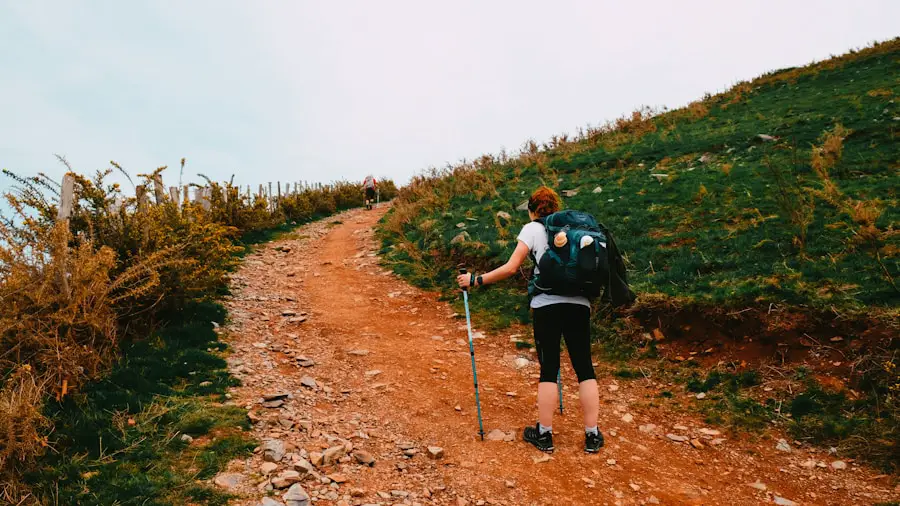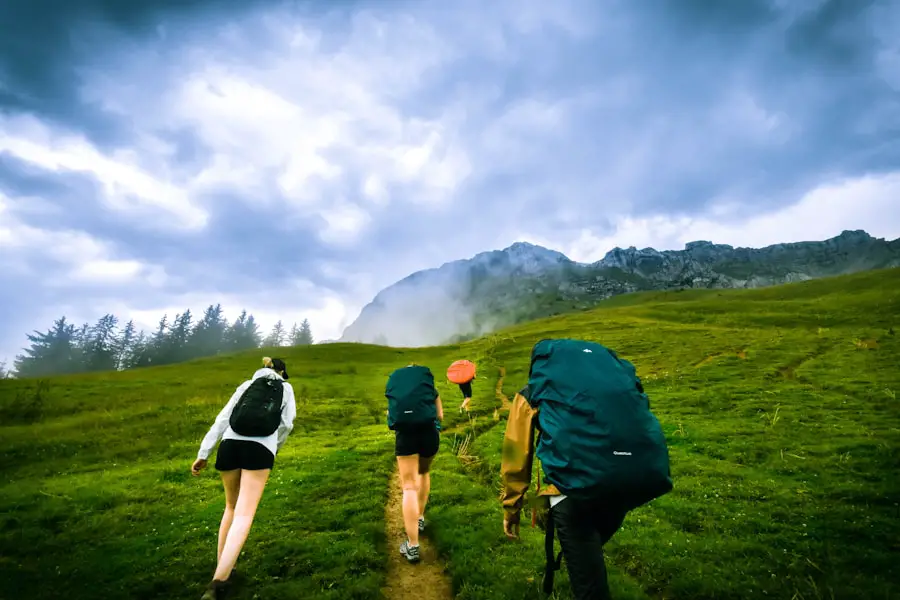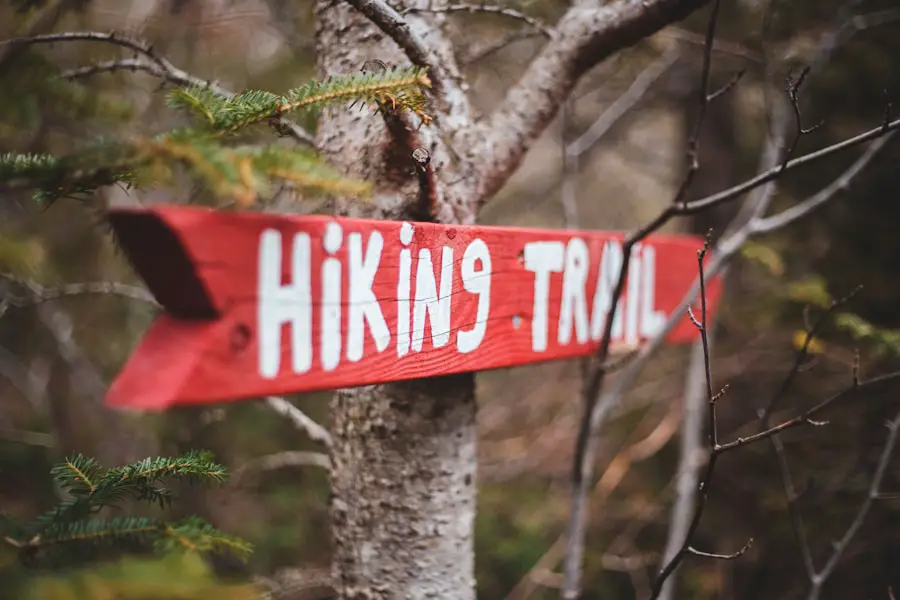Hiking, as a recreational activity, has roots that stretch back to ancient civilizations. The earliest forms of hiking can be traced to the nomadic tribes who traversed vast landscapes in search of food, shelter, and resources. These early humans relied on their ability to navigate through diverse terrains, which laid the groundwork for what would eventually evolve into modern hiking.
As societies developed, the concept of walking for leisure began to take shape. In the 18th century, the Romantic movement in Europe sparked a newfound appreciation for nature, leading to the establishment of walking clubs and organized excursions into the countryside. This period marked a significant shift in how people viewed their relationship with nature, transitioning from mere survival to seeking enjoyment and solace in the great outdoors.
The 19th century saw further evolution in hiking as a recreational pursuit, particularly with the rise of the industrial revolution. As urbanization took hold, people began to seek refuge from the hustle and bustle of city life. National parks emerged as sanctuaries for those yearning to reconnect with nature.
The establishment of the Appalachian Trail in 1921 and the Pacific Crest Trail in 1968 exemplified the growing popularity of long-distance hiking. These trails not only provided a means for individuals to explore vast wilderness areas but also fostered a sense of community among hikers. The latter half of the 20th century witnessed an explosion in outdoor recreation, with hiking becoming a mainstream activity embraced by people from all walks of life.
Today, hiking is not just a pastime; it is a global phenomenon that continues to evolve, adapting to changing societal values and environmental concerns.
Key Takeaways
- Hiking has a long history, evolving from a means of survival to a popular recreational activity.
- Hiking offers both physical and mental benefits, including improved fitness and reduced stress.
- Many hikers find a spiritual connection to nature, experiencing a sense of awe and wonder.
- Hiking can be a form of meditation, allowing hikers to be present in the moment and find inner peace.
- Responsible and sustainable hiking practices are crucial for preserving natural environments.
The physical and mental benefits of hiking: How spending time in nature can improve overall well-being
Engaging in hiking offers a multitude of physical benefits that contribute to overall health and fitness. The act of walking on varied terrain engages different muscle groups, promoting strength and endurance. Hiking can improve cardiovascular health by elevating heart rates and enhancing circulation, which is crucial for maintaining a healthy lifestyle.
Studies have shown that regular hiking can lead to weight loss, improved bone density, and increased flexibility. Furthermore, the natural resistance provided by inclines and declines during hikes can enhance muscle tone and promote better balance. For individuals seeking an alternative to traditional gym workouts, hiking presents an enjoyable way to stay active while immersing oneself in nature.
Beyond the physical advantages, hiking has profound mental health benefits that are increasingly recognized in today’s fast-paced world. Spending time in nature has been linked to reduced stress levels, improved mood, and enhanced cognitive function. Research indicates that exposure to natural environments can lower cortisol levels, the hormone associated with stress.
The tranquility of natural settings allows individuals to disconnect from daily pressures and engage in mindfulness, fostering a sense of peace and clarity. Moreover, hiking has been shown to alleviate symptoms of anxiety and depression. The rhythmic nature of walking combined with the beauty of the surroundings creates an ideal environment for reflection and introspection.
As individuals navigate trails, they often find themselves more attuned to their thoughts and feelings, leading to greater emotional resilience.
The spiritual aspect of hiking: Exploring the connection between nature and spirituality

Hiking often transcends mere physical activity; it can serve as a profound spiritual experience for many individuals. The connection between nature and spirituality is deeply rooted in various cultures and belief systems throughout history. For some, hiking becomes a form of pilgrimage—a journey undertaken not just for physical exploration but for spiritual growth and enlightenment.
The act of walking through majestic landscapes can evoke feelings of awe and reverence, prompting hikers to contemplate their place within the universe. This sense of connection to something greater than oneself can be transformative, fostering a deeper appreciation for life and existence. Many hikers report experiencing moments of clarity and insight while immersed in nature.
The solitude found on remote trails allows for introspection and self-discovery, often leading individuals to confront their beliefs and values. Nature’s beauty can inspire a sense of gratitude and humility, reminding hikers of the interconnectedness of all living things. Spiritual practices such as mindfulness or meditation can be seamlessly integrated into hiking experiences, enhancing the overall journey.
Whether it’s pausing to observe a breathtaking vista or listening to the sounds of rustling leaves, these moments can deepen one’s spiritual connection to the earth. For those seeking solace or answers, hiking offers a unique opportunity to explore both the external world and one’s inner landscape.
Hiking as a form of meditation: How the act of hiking can be a mindful and meditative experience
| Benefits of Hiking as Meditation | Statistics |
|---|---|
| Reduces Stress | According to a study published in the journal Landscape and Urban Planning, spending time in nature reduces stress levels by 28%. |
| Improves Mental Health | A study in the Proceedings of the National Academy of Sciences found that walking in nature decreases negative thoughts and ruminations by a significant margin. |
| Enhances Mindfulness | Research published in the International Journal of Environmental Research and Public Health showed that hiking in natural environments can improve attention and mindfulness. |
| Boosts Physical Fitness | According to the American Hiking Society, hiking can burn between 400-550 calories per hour, depending on the terrain and speed. |
| Promotes Connection with Nature | A survey by the Outdoor Industry Association found that 40% of hikers reported feeling more connected to nature after a hiking trip. |
The practice of mindfulness has gained significant traction in recent years, with many individuals seeking ways to incorporate it into their daily lives. Hiking naturally lends itself to this practice, as it encourages individuals to be present in the moment while engaging with their surroundings. The rhythmic motion of walking combined with focused breathing creates an ideal setting for meditation.
As hikers traverse trails, they can cultivate awareness by tuning into their senses—the feel of the ground beneath their feet, the scent of pine trees in the air, or the sound of birdsong echoing through the forest. Mindful hiking involves more than just physical movement; it is about immersing oneself fully in the experience. By paying attention to each step and being aware of one’s thoughts without judgment, hikers can achieve a meditative state that promotes relaxation and mental clarity.
This practice allows individuals to let go of distractions and worries, fostering a sense of peace that extends beyond the hike itself. Many find that this meditative aspect enhances their overall enjoyment of nature, transforming each hike into a journey of self-discovery and personal growth.
The environmental impact of hiking: Discussing the importance of responsible and sustainable hiking practices
As hiking continues to grow in popularity, it is essential to address its environmental impact. While spending time in nature can foster appreciation for the environment, it also poses challenges such as trail erosion, littering, and wildlife disturbances. Responsible hiking practices are crucial for preserving natural landscapes for future generations.
Adhering to principles such as Leave No Trace ensures that hikers minimize their impact on ecosystems while enjoying outdoor adventures. This includes packing out all trash, staying on designated trails, and respecting wildlife habitats. Sustainable hiking practices also involve understanding local ecosystems and being mindful of seasonal changes that may affect trail conditions or wildlife behavior.
For instance, during certain times of year, trails may be closed to protect nesting birds or fragile plant species. Educating oneself about these factors not only enhances the hiking experience but also fosters a sense of stewardship toward nature. By promoting responsible behavior among fellow hikers and participating in conservation efforts, individuals can contribute positively to the preservation of natural spaces.
The social aspect of hiking: How hiking can be a shared experience that fosters community and connection

Hiking is inherently a social activity that brings people together through shared experiences in nature. Whether it’s embarking on a group hike with friends or joining organized outings through local clubs or organizations, these communal experiences foster connections among participants. The shared challenge of navigating trails often leads to camaraderie as hikers support one another through difficult sections or celebrate reaching scenic viewpoints together.
These moments create lasting bonds that extend beyond the trail. Moreover, hiking provides an opportunity for individuals from diverse backgrounds to connect over a common interest—nature appreciation. Group hikes often encourage conversations about personal stories, experiences, and perspectives on life.
This exchange fosters understanding and empathy among participants while promoting inclusivity within outdoor communities. Additionally, many organizations focus on making hiking accessible to underrepresented groups, ensuring that everyone has the chance to experience the joys of nature together.
Hiking as a form of adventure: Exploring the thrill and excitement of exploring new trails and landscapes
For many enthusiasts, hiking embodies adventure—a thrilling pursuit that invites exploration beyond familiar boundaries. Each new trail presents an opportunity for discovery, whether it leads through dense forests, along rugged coastlines, or up challenging mountain paths. The excitement lies not only in reaching a destination but also in embracing the journey itself—the unexpected encounters with wildlife, breathtaking vistas that unfold around every bend, and the sense of accomplishment that comes from conquering challenging terrain.
Adventure hiking often involves seeking out remote locations or tackling multi-day treks that require careful planning and preparation. These experiences push individuals out of their comfort zones while fostering resilience and adaptability—qualities that extend beyond outdoor pursuits into everyday life. The thrill of navigating uncharted territory ignites curiosity and encourages hikers to embrace uncertainty with open minds.
Each adventure becomes a story waiting to be told—a testament to personal growth through exploration.
The future of hiking: Considering the role of hiking in modern society and its potential impact on future generations
As society continues to evolve amidst rapid technological advancements and urbanization, the role of hiking remains vital for promoting well-being and environmental stewardship. In an age where digital distractions dominate daily life, reconnecting with nature through hiking offers an antidote—a chance for individuals to unplug and recharge both physically and mentally. Future generations will likely face unique challenges related to climate change and habitat loss; thus fostering a love for nature through outdoor activities like hiking becomes increasingly important.
Educational initiatives aimed at introducing young people to hiking can cultivate appreciation for natural spaces while instilling values related to conservation and sustainability. Schools incorporating outdoor education programs encourage students not only to explore local trails but also to understand their ecological significance. As more individuals recognize the benefits associated with spending time outdoors—both personally and environmentally—hiking may play an essential role in shaping healthier lifestyles for future generations while fostering a deeper connection between humanity and nature.
In conclusion, as we look ahead at the future landscape of outdoor recreation, it is clear that hiking will continue to hold significance as both a personal pursuit and a communal activity that enriches lives across generations.
If you are looking to enhance your hiking experience, you may want to consider investing in a pair of traveler pants. These versatile and durable pants are designed to withstand the rigors of outdoor activities like hiking while providing comfort and functionality. Additionally, you may also want to check out the best travel camera backpacks to ensure you can capture all the breathtaking views along the way. And if you enjoy a good cigar while taking in nature, a travel humidor may be the perfect accessory for your hiking adventures.
FAQs
What is hiking?
Hiking is a recreational activity that involves walking in natural environments, often on trails or paths. It is a popular outdoor activity that allows people to explore and enjoy nature while getting exercise.
What are the benefits of hiking?
Hiking offers numerous physical and mental health benefits. It can improve cardiovascular fitness, strengthen muscles, and help with weight management. Additionally, hiking in nature has been shown to reduce stress, improve mood, and enhance overall well-being.
What equipment do I need for hiking?
Basic hiking equipment includes sturdy and comfortable footwear, appropriate clothing for the weather, a backpack to carry essentials such as water, snacks, and a first aid kit, navigation tools like a map and compass, and sun protection like sunscreen and sunglasses.
How do I prepare for a hike?
Before a hike, it’s important to research the trail and its difficulty level, check the weather forecast, and inform someone of your hiking plans. It’s also crucial to pack essential items, stay hydrated, and be aware of any potential hazards on the trail.
What are some popular hiking destinations?
There are countless hiking destinations around the world, each offering unique landscapes and experiences. Some popular hiking destinations include national parks such as Yosemite in the United States, the Inca Trail in Peru, the Swiss Alps in Switzerland, and the Great Wall of China.
